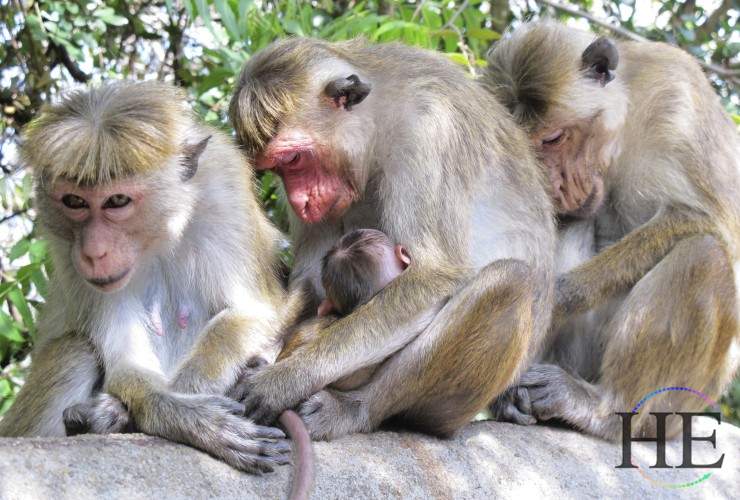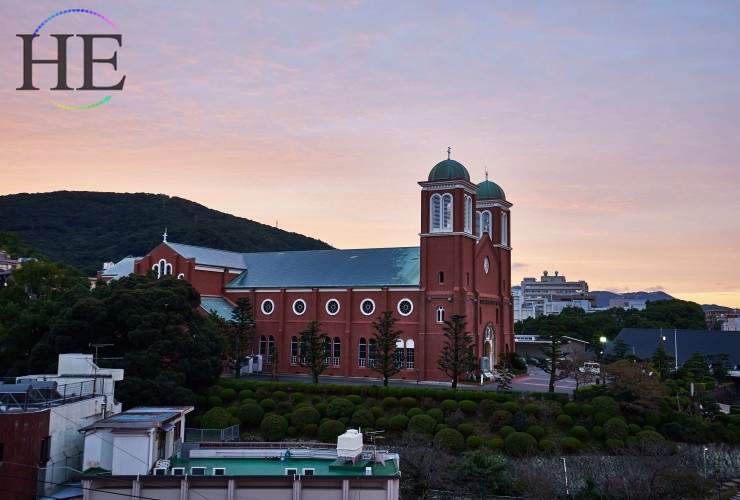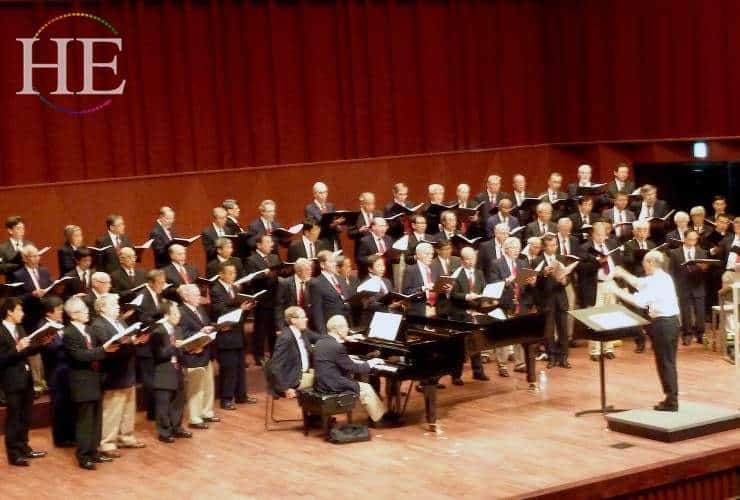
Japan prides itself on an incredibly rich cultural heritage. We design our HE Travel Japan tours to weave together the diverse cultural threads that make Japan unique. Our gay Japan cultural tour includes in-depth experiences to feel Japan’s long history as well as contemporary arts. We even include a stop to see the snow monkeys of the Japanese Alps! We also create specialized tours such as a unique Japanese Ningyo/doll-themed tour and musical performance tours. Following is an account of one of those tours.
“Songs of the people, songs of the world. One song unto all.”
This sometimes-clichéd philosophy came to life for me in September 2009 in Nagasaki, Japan. For the fourth time since 1990, I joined the Harvard Glee Club Alumni Chorus and the Kyoto University “Old Boys Chorus” to sing a concert together in Japan.
The mayor of Nagasaki invited the two choruses to perform together. He wished to commemorate Japan’s opening to the world 150 years before, following 200 years of isolation. Nagasaki was the first port that allowed foreigners to settle, and a small Dutch community took root there. Over the years, the international settlement grew and became an integral part of the city. The city’s setting and history inspired Puccini to use Nagasaki as the setting for his opera Madame Butterfly.
Nagasaki’s Urakami Cathedral

A powerful symbol of Nagasaki’s European ties was the soaring Urakami Cathedral, perched on a bluff overlooking the city. It was the largest Christian church in East Asia until it was destroyed in the atomic bomb blast of August 9, 1945.
The few columns and gargoyles that survived the blast now stand as silent sentries above the monument marking the blast’s hypocenter. In 1959 the Christians of Nagasaki built a spacious new cathedral on the site of the old one. This is where the young, articulate mayor chose to host our concert.
Harmony from Dissonance

The choruses from Kyoto and Harvard each sang several pieces alone, then we raised our voices together in harmony. My most poignant moment was our only piece accompanied by the cathedral’s stately pipe organ, “Cantus omnibus unus” (One Song unto All). This song was written by Japanese composer Ryuichi Sakamoto, who wrote the music for the Last Emperor. He wrote this piece in tribute to his New York City neighbors who died on 9/11. The piece opens in unison, slides into a dissonant crescendo, then quietly melts into its majestic final harmonies.
The Mayor of Nagasaki, the Cultural Attaché from the American Consulate of Kyushu, and 900 other guests attended our concert. On the stage were 100 sons of men who had fought on both sides of World War II. We raised our voices in unison in honor of those lost in that war, on 9/11, and in too many other conflicts. Surrounding us was a sanctuary made holy by the second and final atomic bomb unleashed on a city. This day, however, all was harmony.
“Cantus populi, cantus mundi. Cantus omnibus unus.”
